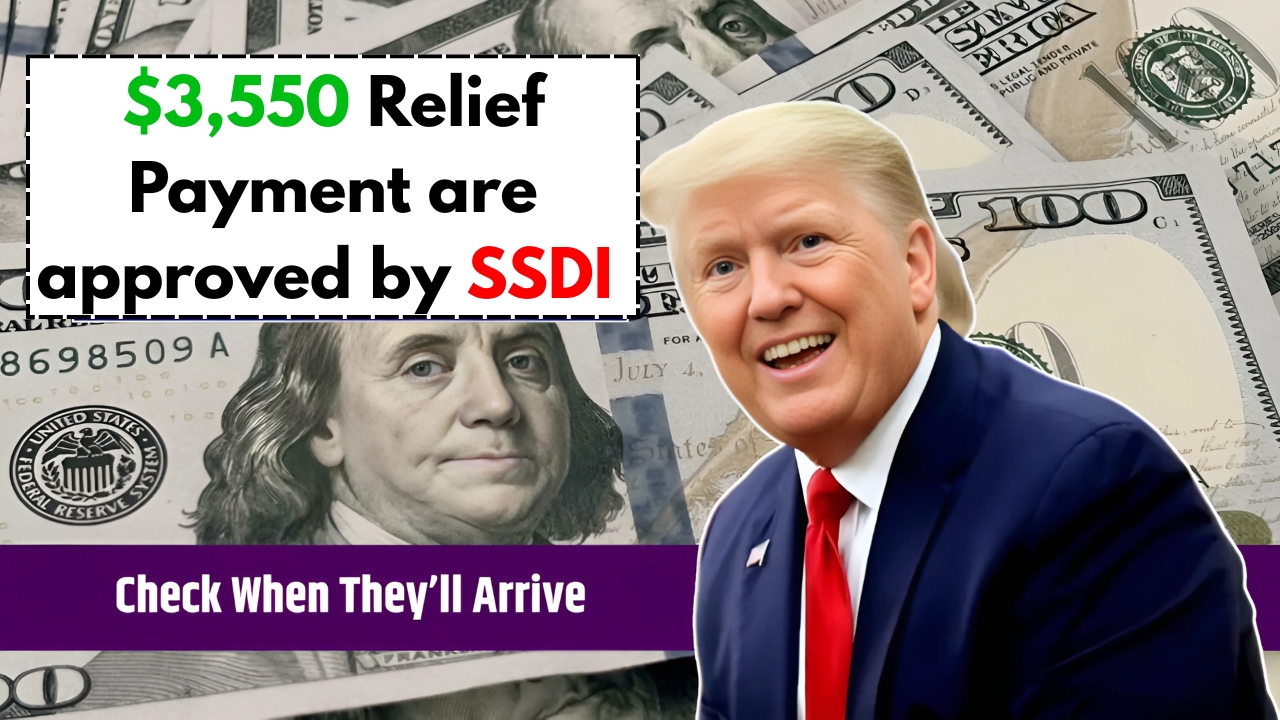Relief Payment : Reports circulating about a $3,550 relief payment approved by Social Security Disability Insurance have created significant confusion among disability benefit recipients searching for accurate information. The truth is that SSDI operates as a federal insurance program with standardized monthly payments based on individual work history and earnings records, not through special relief payments or bonuses. No official announcement from the Social Security Administration confirms any $3,550 supplemental payment for SSDI recipients in 2025.
The $3,550 figure closely matches the maximum possible monthly SSDI benefit for 2025, which stands at approximately $3,822 for workers who earned at Social Security’s maximum taxable wage limit for many years before becoming disabled. However, this represents the highest regular monthly benefit available to a small percentage of recipients with extensive high-earning work histories, not a special relief payment available to all SSDI beneficiaries. Most recipients receive between $1,400 and $1,800 monthly based on their actual earnings history and work credits accumulated before disability onset.
How SSDI Payments Actually Work
Social Security Disability Insurance functions as an earned benefit program where payment amounts depend entirely on your work history and contributions to Social Security through payroll taxes. The calculation uses your average indexed monthly earnings during your highest-earning years, applying a progressive formula that replaces a percentage of pre-disability income. This means two people with identical disabilities might receive vastly different SSDI amounts based on their previous earnings and work duration.
Monthly SSDI payments arrive on a predictable schedule based on recipients’ birth dates. Those born on the 1st through 10th receive payments on the second Wednesday, 11th through 20th on the third Wednesday, and 21st through 31st on the fourth Wednesday of each month. These payments continue at the same base amount unless affected by cost-of-living adjustments, work activity, or medical improvement. The only variations in payment amounts come from annual COLA increases, retroactive payments for delayed approvals, or adjustments due to work attempts affecting eligibility.

Legitimate SSDI Payment Scenarios
Several legitimate situations might result in larger SSDI payments that could be misinterpreted as special relief payments. Retroactive benefits can create substantial lump-sum payments when disability onset dates precede application dates by many months. These back payments can accumulate to thousands of dollars, arriving as single deposits that might surprise recipients expecting only regular monthly amounts. Additionally, attorney fees from successful appeals are typically deducted from back payments, so recipients might receive different amounts than expected.
Cost-of-living adjustments occur annually, with 2025 bringing a 2.5% increase to all Social Security benefits including SSDI. For someone receiving $2,000 monthly, this translates to an extra $50 per month or $600 annually. While helpful, these routine adjustments differ significantly from the special relief payments suggested by circulating claims. Some recipients might also receive state supplemental payments or other benefits that coincide with SSDI but come from separate programs entirely.
Alaska approved $3284 Stimulus Payment – Eligibility details see here
Relief Payment Verifying Your Actual SSDI Benefits
Recipients should verify their SSDI information through official Social Security Administration channels rather than relying on social media claims or unofficial websites. Creating a my Social Security account at SSA.gov provides secure access to benefit statements, payment histories, and any scheduled adjustments. This official portal shows exact payment amounts, dates, and any changes affecting future benefits.
The Social Security Administration sends official notices by mail regarding any benefit changes, never through unexpected phone calls or emails. If you receive communication about additional payments or relief funds requiring personal information or upfront fees, it’s likely a scam. Legitimate SSDI payments never require recipients to pay processing fees or provide banking information through unofficial channels. Contact Social Security directly at 1-800-772-1213 if questions arise about your benefits, using only official contact information rather than numbers provided in suspicious messages.